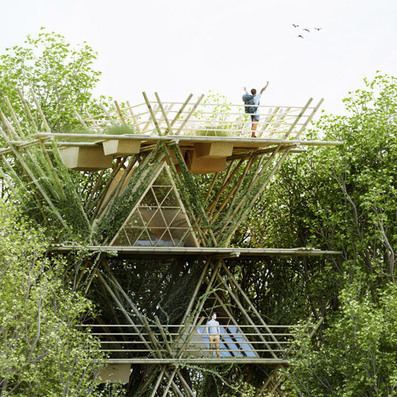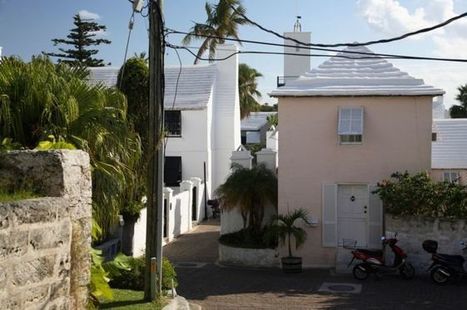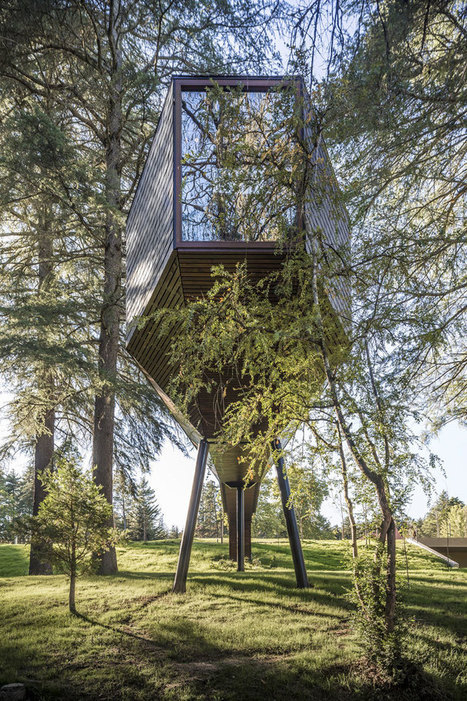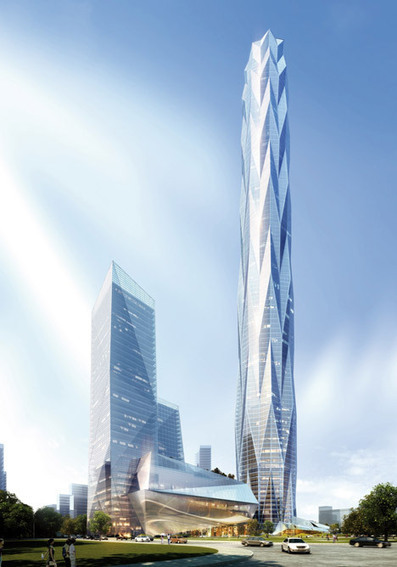"Unchecked development remains a priority in the famously un-zoned city, creating short-term economic gains for some, but long term flood risk for everyone."
Get Started for FREE
Sign up with Facebook Sign up with X
I don't have a Facebook or a X account
 Your new post is loading... Your new post is loading...
 Your new post is loading... Your new post is loading...
Nicole Canova's curator insight,
February 8, 2018 9:47 PM
It is interesting to see the cultural and political implications of the removal of monuments to the Confederacy. It is also interesting to see how ethnicity and race come into play on this issue. On the one hand, the mostly black population of New Orleans sees these monuments as celebrating an institution of abuse, exploitation, and white supremacy that likely impacted a majority of their ancestors. These people voted overwhelmingly for politicians who promised to remove these symbols of the movement that aimed to preserve that institution. On the other hand, there are people in the community that view the removal of these monuments as the erasure of the city's history. It is a sensitive topic for many, but it is important that we remember the past with out celebrating negative parts of it.

joellemillery's curator insight,
August 28, 2016 5:28 AM
In Munich, bike paths feel overcrowded, for example, there is a need for a new #urbanism #transportation # plan ;-)
Sally Egan's curator insight,
November 22, 2015 5:28 PM
Provides great example of the concepts of Place and Lieveability.

Kelsey McIntosh's curator insight,
February 13, 2018 9:13 PM
In the Chiapas, Mexico there is a 16th century church that has been revealed due to the decrease in a reservoirs water level. This brief article is accompanied by pictures of the church that was abandoned in the 1770's do to the plague. According to the article, this is the second time the place of worship has been seen since 2002.

Olivia Campanella's curator insight,
September 19, 2018 10:53 AM
This 16th century church first emerged from the waters of the Nezahualcoyotl reservoir in the Southern Mexican state of the Chiapas. And since the reservoir was completed in 1966 with the waters dropping low enough to reveal the church for the 2nd time. The waters have dropped low enough in 2002 for people to actually walk inside and stand on.

Kelvis Hernandez's curator insight,
September 29, 2018 11:53 PM
"You go in the cage, cage goes in the water, you go in the water. Churches in the water, our church." At least I am pretty sure that's how the line from Steven Speilberg's 1975 thriller "Churches". This 16th-century church just emerged from the nezahualcoyotl reservoir in Mexico which hasn't occurred since 2002. The temple of Santiago was built by monks who came to Mexico around the late 16th century, but it was ultimately abandoned after being hit by the plague in 1773-1776. The drought in the area caused the water level to drop 82 feet. This being the second time water levels have revealed the church, in 2002 visitors were able to walk into the temple itself. 1
Seth Forman's curator insight,
May 26, 2015 6:57 PM
Summary: This interesting video talks about principles that should be considered by city planners that could make our life's better and happier.
Insight: This video is relevant to unit 7 because it shows efforts that should be taken by urban planners and how a simple city layout can effect our lives.
Emerald Pina's curator insight,
May 27, 2015 1:01 AM
This video gives you an overview of how to make the most attractive city in six ways. It explains the reasons and the wants of a city that potential residents are looking for.
This video relates to Unit 7: Cities and Urban Land Use because it talks about the orgin, site and situation a city should have for it to be considered attractive to people. A city should be chaotic/ordered, should have visible life, compact, is should have a nice/mysterious orientation, it should not be too big or too small, and it should be local and lively. Today, many cities lack attractiveness because of the intellectual confusion around beauty and the lack of political will. I totally agree with video and the requirement s to have an attrative city.
Shane C Cook's curator insight,
May 27, 2015 4:17 AM
We definitely need more visually pleasing cities, our world is lacking and we are loosing it to like in the video "corporate opportunists".

Louis Mazza's curator insight,
February 26, 2015 8:09 PM
Europe’s Empty churches going on sale is not upsetting to me, unless they are being used as skateboard parks. The main reason to the church’s closings are a rise in secular beliefs. With less people attending and making tributes to the churches they are given no choice but to shut down. These are buildings of great archaic integrity and I think that they should be sold to museums or to state governments as holy sites or something to that effect. These buildings should be preserved because they are a giant standing living history of this world. But as of now skate ramps and parks occupy these churches and may be damaging them. 
Edgar Manasseh Jr.'s curator insight,
March 7, 2015 9:25 PM
Empty buildings now turned into just churches used for fun, or by the picture skateboarding. Europe is always known as the power house especially during their colonial period, when they colonized Africa and brought some of their religious beliefs towards the Africans. Europe is filled with big catholic traditions tracing back to the past, but now with this going on its a very sad state seeing something so significant in history in the European community go to waste..
Stevie-Rae Wood's curator insight,
October 28, 2018 3:02 PM
Europe back in the day used to be highly religious. Everyone went to church and participated in religious ceremonies. Europe was so heavily populated at one point that to accommodate to all the people many churches were built. However, in todays world religion is on the decline in this once secular society. With all these empty churches they are using up valuable space. So these churches are being sold off and converted into useful buildings in the eyes of modern society's. An example of what these buildings of worship are being converted into are skate parks, because it related to todays youth. I think it is sad that these churches are being sold and converted into new modern buildings. However, there structures are being kept in tacked. This means that what the church stood for is still staying alive in our destructive modern world.

A. Perry Homes's curator insight,
July 15, 2014 2:38 PM
FInally, our Swiss Family Robinson dream has come true, and we can vacation in the trees! |
Zeke Robinson's curator insight,
May 26, 2015 9:23 PM
i disagree with this guy, for suburbs bring us close and save space and its good that we have them.

Catherine Devin's curator insight,
November 21, 2014 1:59 AM
De nombreux projets "pharaoniques" en Chine, certains plus verts que d'autres ? Voir peut-être aussi : http://www.gizmag.com/binhai-eco-city/33798/

Philippe Blot Lefevre's curator insight,
November 22, 2014 11:07 AM
Le seul moyen de s'approcher de la perfection de la Nature, est de l'imiter. Les formes et polyèdres platoniciens sont incontournables. L'effet n'est pas que visuel puisque notre corps est lui-même constitué de cellules apparentées à ces formes. Ainsi s'opère l'harmonie entre l'objet qui nous habite et ceux que nous côtoyons.

dilaycock's curator insight,
August 3, 2014 3:50 AM
I'd never really taken notice, or heard of some, of the architectural deterrents mentioned here. I can't believe that we, as a society, go to such lengths to make life even more difficult for those already struggling. |


































Houston's development boom and reduction of wetlands leave region prone to more severe flooding. Here is a great map of the change in impervious surfaces in the region from 1940 to 2017--when you combine that with record-breaking rainfall the results are catastrophic. But a local understanding of place is critical and this viral post--Things non-Houstonians Need to Understand--is pretty good.
Tags: physical, fluvial, water, coastal, urban, planning, transportation, architecture.
Un dossier sur les inondations à Houston (en anglais). La présentation est très originale.